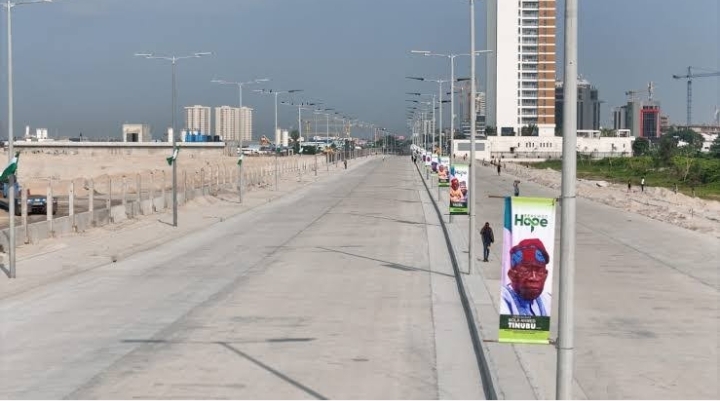When former President Muhammadu Buhari took the decisive step to actualize the Second Niger Bridge—linking Onitsha in Anambra State to Asaba in Delta—it marked the fulfillment of a promise long delayed by successive governments. The significance of this achievement was historic. Yet, rather than embrace the moment, some in the political opposition chose denial and revisionism.
First, they claimed the bridge did not exist. Then, when evidence of its construction became impossible to ignore, they pivoted—arguing it was initiated and funded by former President Goodluck Jonathan. A similar story unfolded with the Lagos-Ibadan standard gauge railway. At the project’s inception, it was roundly criticized and written off. But once completed and operational, critics turned around to claim ownership of the progress they once opposed.
The irony is stark: those who loudly condemned these projects are now their primary beneficiaries. Today, they travel over the Second Niger Bridge, hop on the Lagos-Ibadan train, film music videos on newly completed roads, and engage in recreational activities on infrastructure they had once labeled a hoax.
Now, under President Bola Ahmed Tinubu, the same cycle is repeating.
Shortly after his inauguration, President Tinubu declared his administration’s intention to pursue four major legacy infrastructure projects. Predictably, this vision was met with the familiar chorus of skepticism, sarcasm, and political resistance. The loudest objections targeted the most ambitious of them all: the 700-kilometer Lagos-Calabar Coastal Highway—a project of national and continental significance.
But while detractors tweeted, President Tinubu got to work.
Today, the first 30 kilometers of the coastal highway have already been completed, built with cutting-edge rigid pavement technology. The concrete slabs, between 600 to 700 millimeters thick and reinforced with 25 to 30mm TMT bars, are designed to last up to a century without requiring major maintenance. This project is not just massive—it is strategic, cost-effective in the long term, and technologically superior to traditional asphalt roads.
And now, the same people who mocked the project have begun to use it. They are the first to race cars, shoot music videos, and pose for Instagram on the very highway they once dismissed as fantasy. Some are even offended that Nigerians are celebrating the opening of a completed section. To them, I say: if you find a functional road too offensive, feel free to swim in the Atlantic.
Indeed, this may be the first time since 1999 that a brand-new federal road is being built completely from scratch—with no prior alignment, no repurposing of colonial paths, just fresh vision and modern execution. And this is only the beginning.
Construction is also advancing along the Calabar and Akwa Ibom axis of the highway. Meanwhile, other legacy projects are unfolding: the road linking the Southeast to the North Central was recently flagged off, and the massive Sokoto-Badagry highway—spanning over 1,000 kilometers—is under active construction. These are not isolated efforts; they are part of a bold reimagining of Nigeria’s infrastructure architecture.
This national reengineering is not only about roads. It is about interconnectivity, commerce, national unity, and economic recovery. President Tinubu’s infrastructure drive is bridging not only geographic gaps but also social and economic divides that have festered for too long.
A great deal of the credit must go to Engr. Dave Umahi, the Minister of Works. As a former governor and accomplished civil engineer, Umahi brings a rare combination of political experience and technical expertise. His insistence on using rigid pavement—despite pushback—demonstrates his commitment to long-term value, not short-term expediency. Under his leadership, the Ministry of Works has become an engine room of progress.
These road projects, especially the Lagos-Calabar Coastal Highway, carry enormous economic implications. They will reduce travel times, ease the movement of goods and people, stimulate tourism, attract investment, and open up previously inaccessible markets. They will connect seaports with inland cities, unlock dormant economic corridors, and enhance national security along coastal zones.
Yet, while machines roll and milestones are met, some remain committed to politicizing progress. They are quick to criticize what they do not control, to oppose what they did not initiate, and to downplay what they cannot take credit for. They believe if a project is not born from their political camp, it must be flawed, no matter how transformative it proves to be.
But facts do not lie, and concrete does not bend to propaganda.
We must rise above this cycle of doubt, denial, and deliberate misinformation. Nation-building requires maturity, continuity, and a willingness to support good ideas—regardless of political origin. Infrastructure, after all, does not belong to a party; it belongs to the people.
President Tinubu’s infrastructure agenda is steadily becoming a defining legacy of his leadership. It is bold, inclusive, and anchored on long-term national interest. The Lagos-Calabar Coastal Highway is not merely a road—it is a statement of vision, a marker of modernity, and a symbol of renewed hope.
Let us give credit where it is due. Let us support what is right for Nigeria. And let us remember: progress does not pause for politics.

